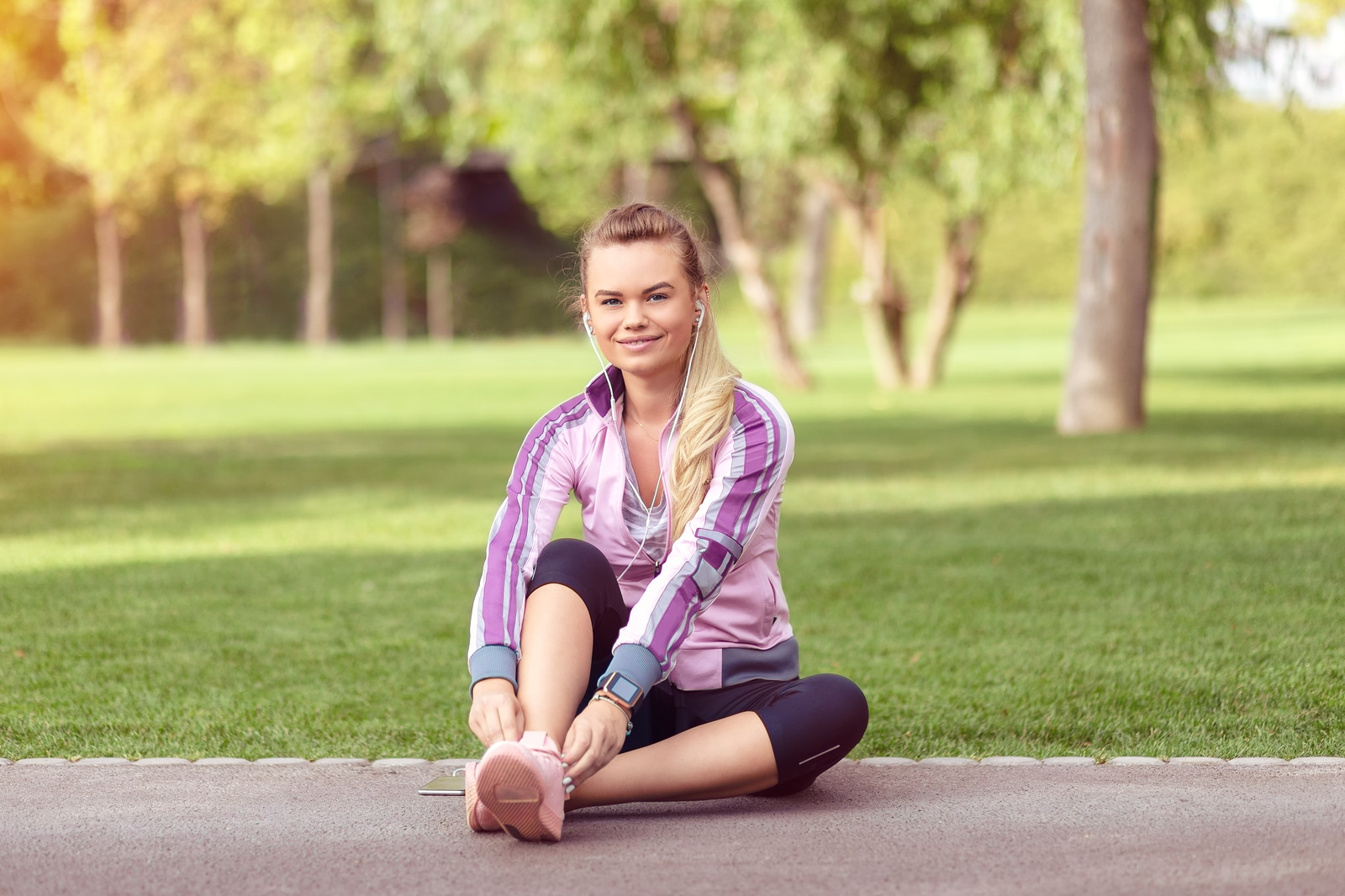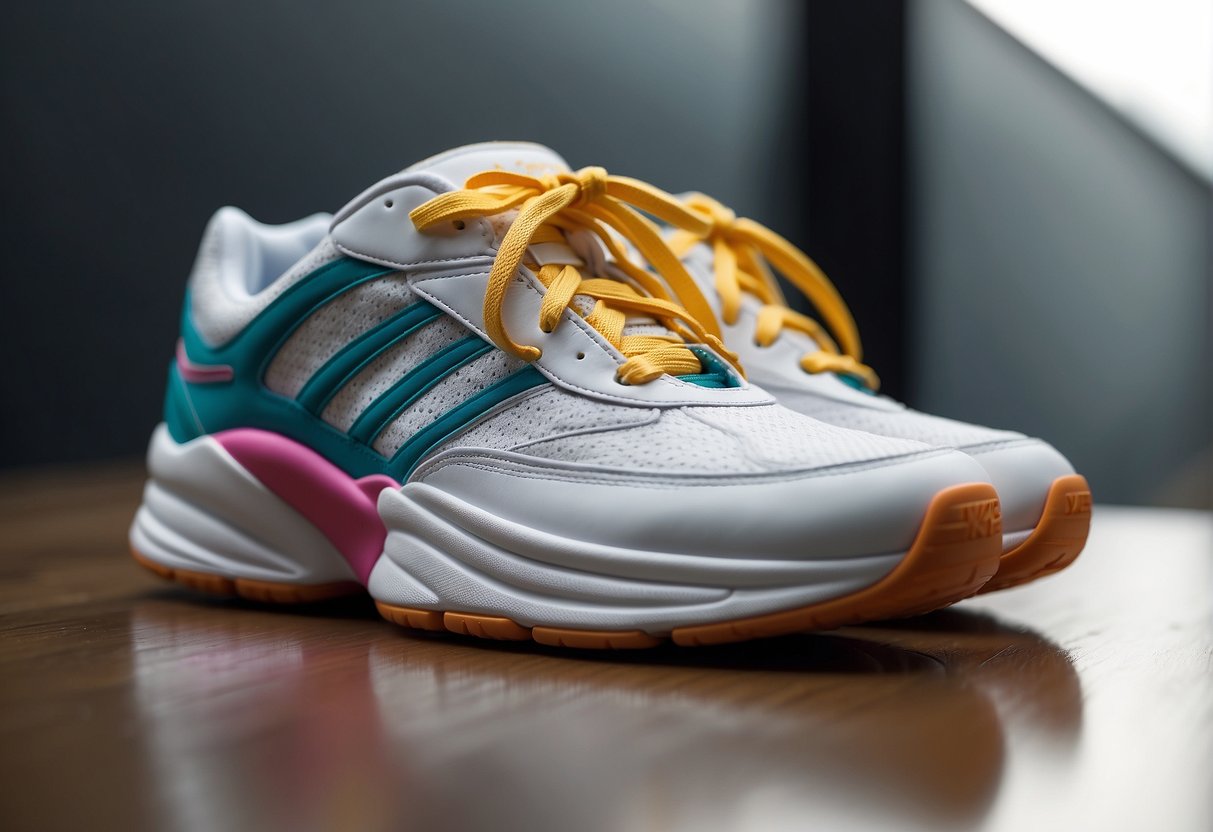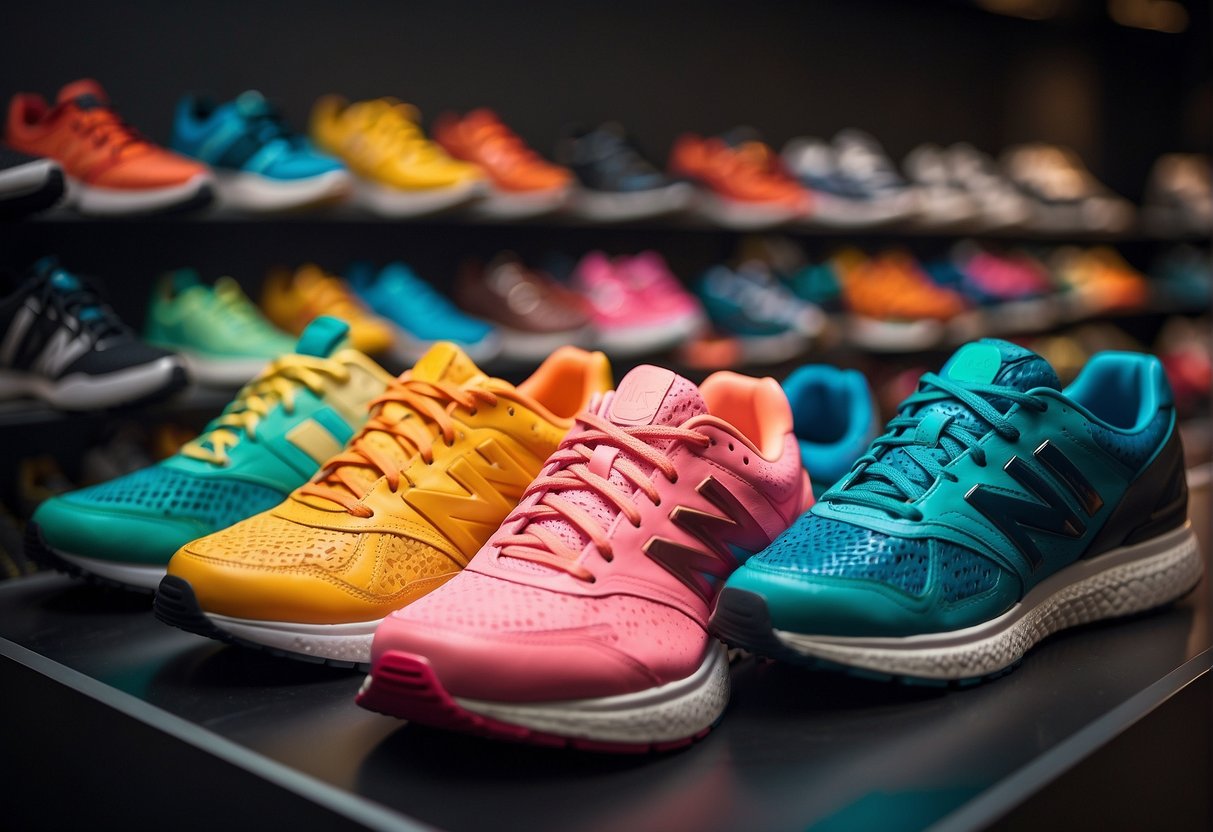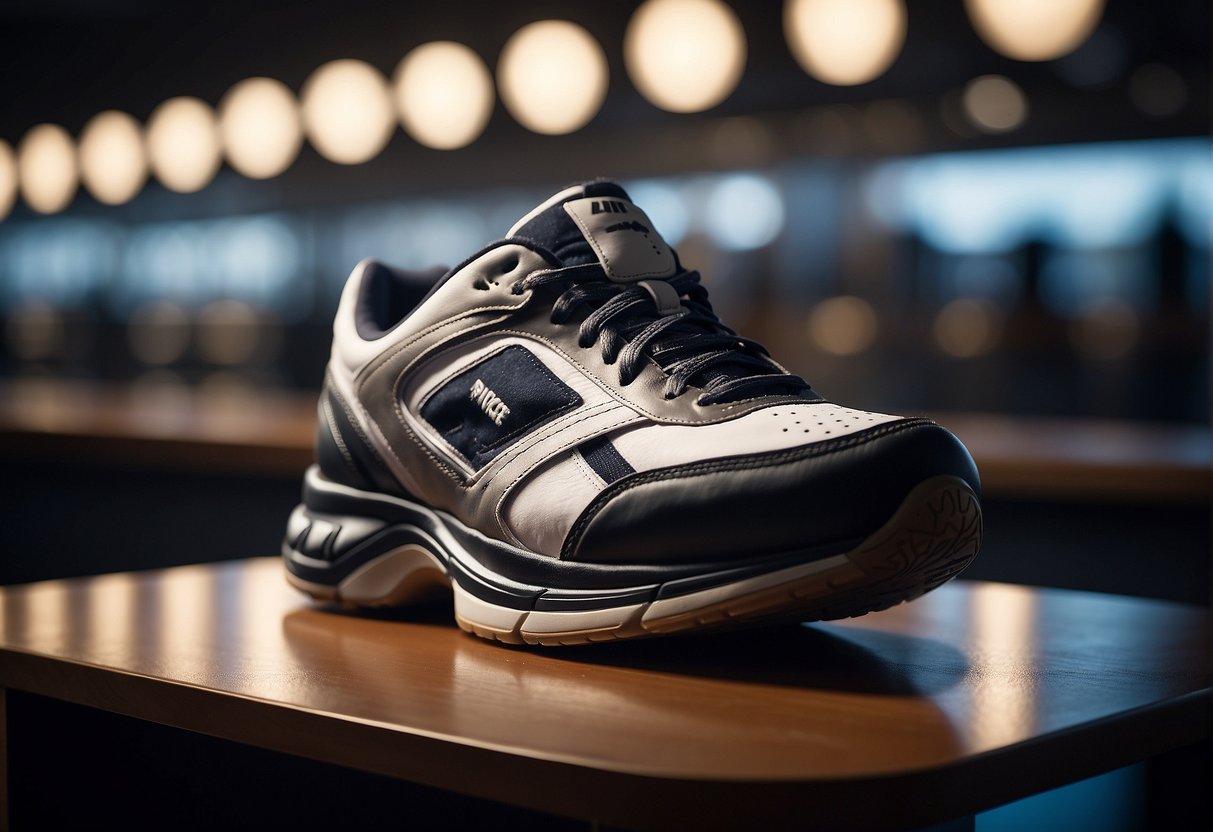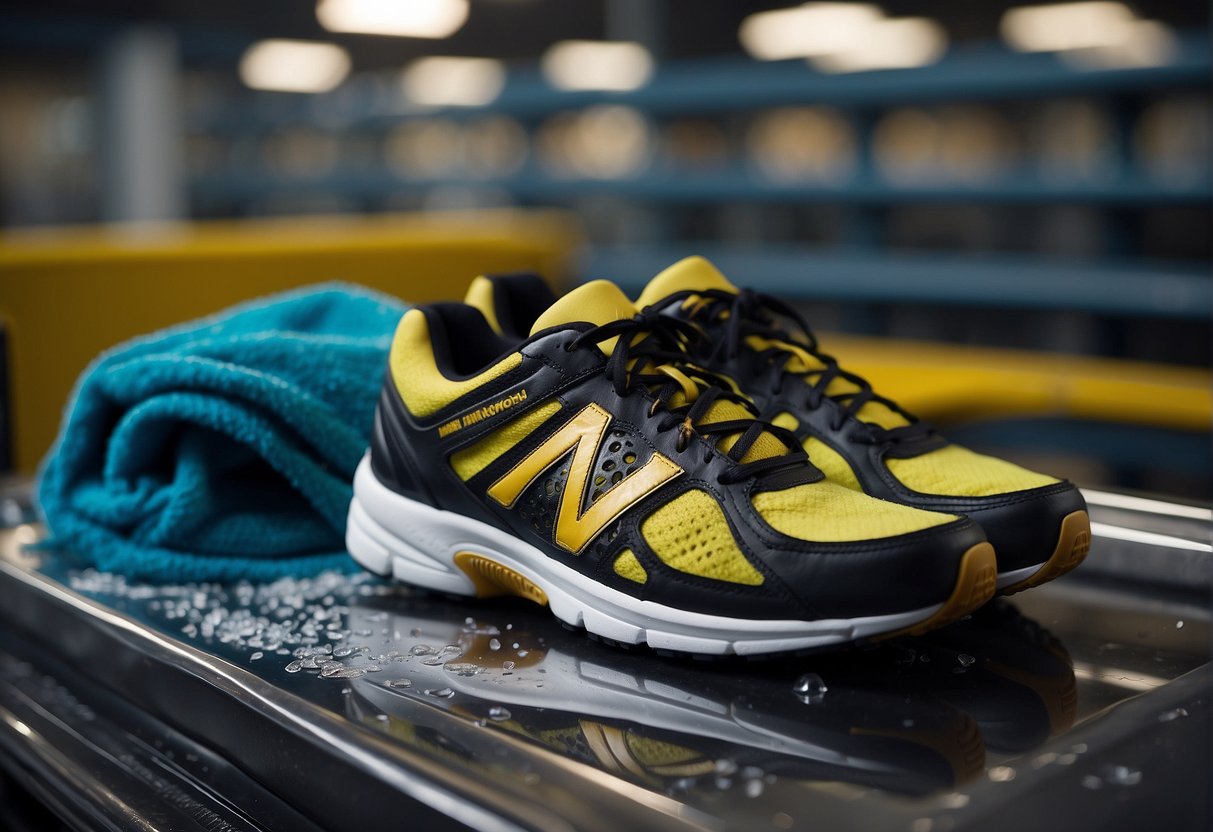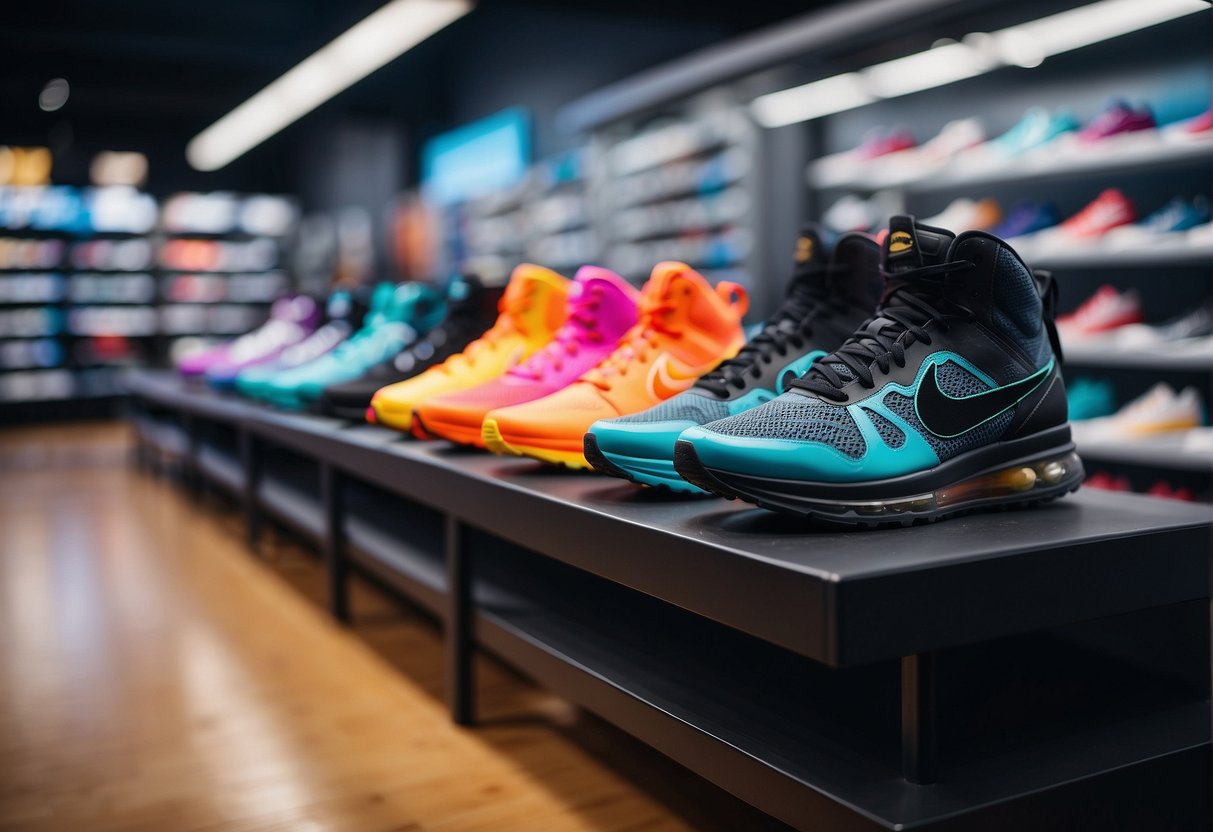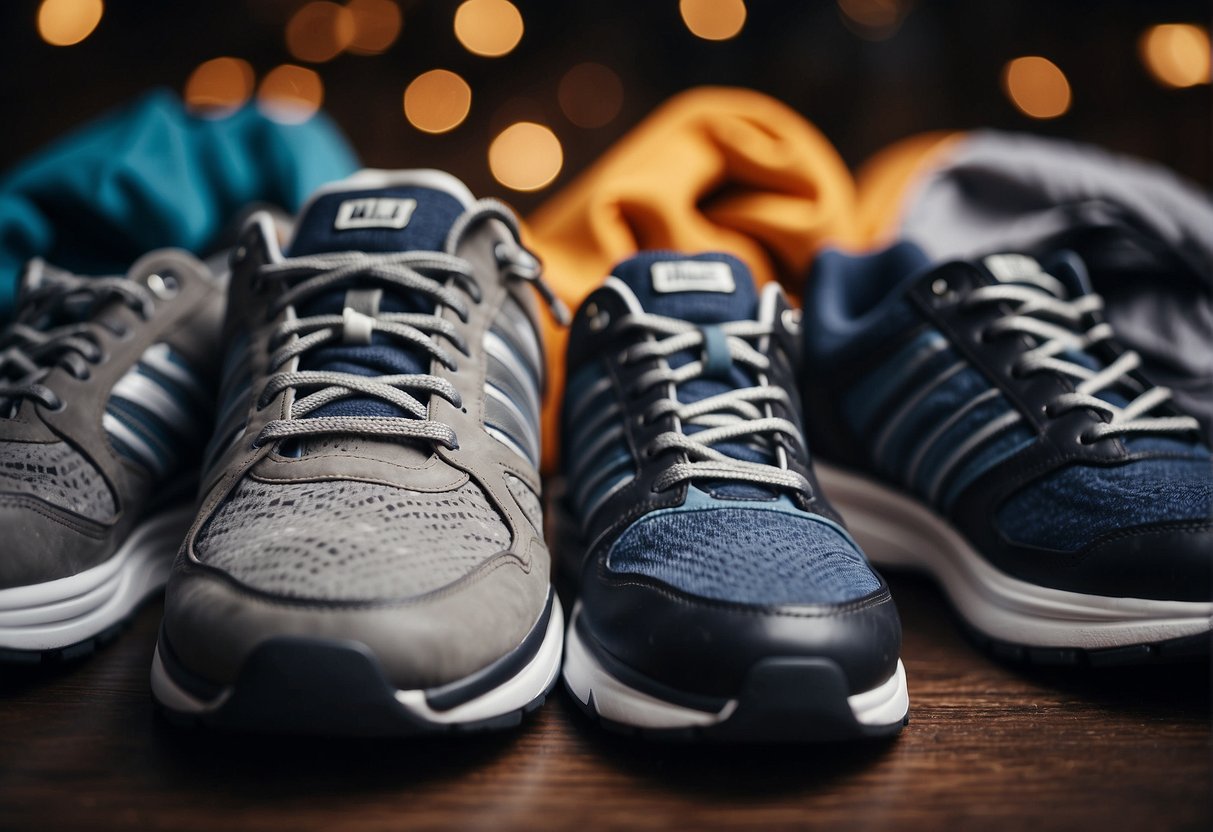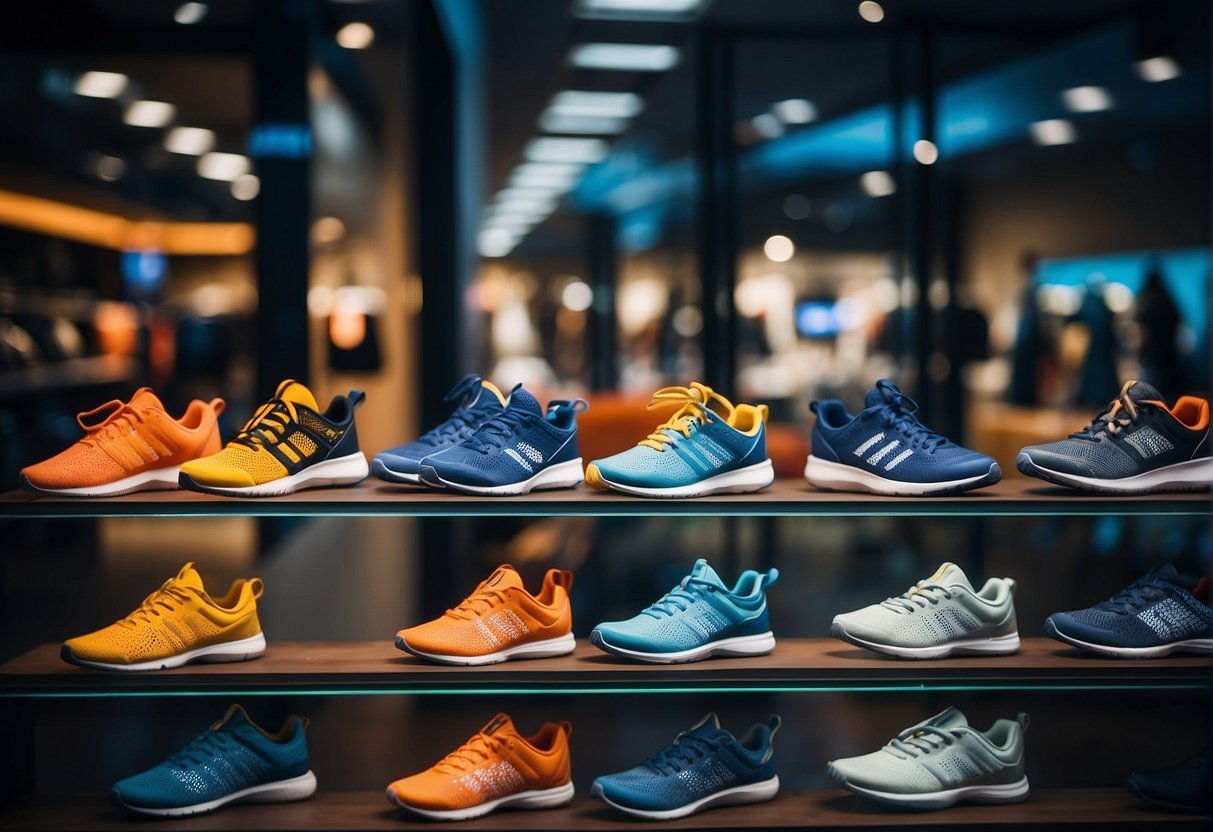Athletic shoes have become an essential part of our everyday lives, not only for athletes but for people from all walks of life. These shoes have undergone a remarkable transformation over the years, evolving from a basic necessity to a fashion statement. Today, there is a wide variety of athletic shoes available, catering to the diverse needs of various sports and activities, as well as individual preferences.
One of the key factors in choosing the right athletic shoe is understanding the specific requirements of the sport or activity you are involved in. Various sports demand different levels of support, cushioning, and stability, making it crucial to identify the features that best suit your needs. Moreover, the advancements in athletic footwear have led to the development of cutting-edge technologies and innovative materials, offering consumers better performance and comfort.
Key Takeaways
- Athletic shoes have evolved to cater to the diverse needs of sports and activities while becoming a fashion statement.
- Choosing the right athletic shoe depends on understanding the specific requirements of the sport or activity.
- Advancements in athletic footwear offer improved performance and comfort through innovative technologies and materials.
History and Evolution of Athletic Shoes
The history of athletic shoes dates back to the 1800s, when manufacturers began creating specialized footwear for specific sports like tennis, running, and basketball. Before this time, people wore regular shoes for all kinds of activities, including sports. The emergence of sports shoes was a major turning point in the shoe industry, with companies like the Liverpool Rubber Company, founded by John Boyd Dunlop, leading the way in the creation of more specialized footwear ([source]).
Various brands have contributed to the evolution of athletic shoes. Adidas grew as a soccer shoe company in the 1950s, while Nike famously began as a running-shoe company in 1964 ([source]). From the initial stages of focused design, athletic shoe styles have continued to evolve significantly, adapting to the changing needs of athletes and sports enthusiasts alike.
Some notable innovations in this sector include the introduction of cushioning in the 1970s, which allowed for better support and comfort in distance running shoes ([source]). Trail running shoes also emerged as a subcategory, designed specifically for running off-road, with added traction and protection features.
Styles of athletic shoes that gained popularity over time include:
- Tennis shoes: Originally designed for use on tennis courts, offering support and grip for lateral movement.
- Running shoes: Created with cushioning and support to protect feet while running on various surfaces.
- Basketball shoes: Designed to provide ankle support and enhance agility during the game.
One major aspect of modern athletic shoes is the development of lighter materials for better performance. For example, a study found that for every 100 grams added to shoes, 3,000-meter times slowed by 0.78% ([source]). This has led to shoemakers finding ways to lighten their products while maintaining durability and security.
In recent years, another significant advancement in the world of sports footwear is the introduction of 3-D printed soles. Brands like New Balance and Nike announced the first mass-produced shoes with 3-D printed soles, signaling a new era of customization in the industry ([source]).
Over the years, athletic shoes have undeniably developed to cater to the precise needs of various sports and athletes. With constant innovations and adaptations, it is evident that the shoes we know and love today will continue to transform in the future.
Types of Athletic Shoes
Running Shoes
Running shoes are designed for various types of runners, including men, women, and kids. They cater to different terrains like road, trail, and track. Road running shoes provide cushioning and support for running on pavement, while trail running shoes have more aggressive grip and reinforced toe protection for rugged terrain. Track running shoes are lightweight and have spikes for traction during races or training on a track surface.
Gym Shoes
Gym shoes are versatile footwear options for both men and women and are ideal for indoor workouts. These shoes provide stability and comfort during weightlifting, cardio, and group fitness activities. They usually have cushioned soles and breathable materials to keep you comfortable during your workout sessions. Some gym shoes are also designed specifically for cross-training, offering lateral support for a variety of exercises.
Basketball Shoes
Basketball shoes are designed to provide ankle support, grip, and cushioning for players on the court. They feature high-top designs to protect the ankle and midsole cushioning for impact absorption during jumps. Basketball shoes are available for men, women, and kids, with specialized versions for different playing positions such as guards and forwards. Look for a shoe that offers the right combination of support, grip, and responsiveness for your specific playing style.
Training Shoes
Training shoes are suitable for a wide range of sports and fitness activities. They provide support and stability for diverse workouts such as strength training, agility drills, and short distance runs. These shoes often have flexible soles and breathable materials, making them comfortable for extended periods of use. Like gym shoes, training shoes are available for men, women, and kids, catering to various fitness levels and preferences.
Sport-Specific Shoes
Sport-specific shoes are designed to meet the unique demands of a particular sport. For example, soccer cleats have studs for traction on grass, while baseball and softball cleats have longer and narrower designs with metal or molded plastic toe cleats. Tennis shoes offer lateral support and court-specific traction for quick movement changes. When selecting a sport-specific shoe, consider the unique characteristics of the sport and choose a shoe that aligns with your specific needs and preferences.
Choosing the Right Athletic Shoes
Fit and Comfort
When choosing athletic shoes, it’s crucial to prioritize fit and comfort. A proper fit ensures that your feet have ample room to move and breathe, reducing the risk of blisters and other injuries. To find the perfect fit, visit a store that specializes in athletic footwear and have your feet professionally measured. Remember, your shoe size may vary between different brands and styles.
Make sure to try on shoes with the socks you plan on wearing during your activities, as this can affect the fit. Allow for a thumb’s width of space between your longest toe and the front of the shoe. This guide provides helpful tips on finding the right pair.
Support and Stability
The amount of support and stability you need in athletic shoes depends on your specific gait and foot shape. People with flat feet or low arches typically require more support, while those with high arches need extra cushioning. Shoes designed for overpronators focus on stabilizing the foot and preventing excessive inward rolling, while shoes for underpronators tend to be more flexible to promote natural foot movement.
To determine your arch type and the appropriate level of support, you can perform a wet foot test. This will help you identify which type of athletic shoe is most suitable for your needs.
When selecting athletic shoes, also consider the type of activity or sport you’ll be participating in. Road-running shoes have flatter, smoother soles that work well on paved surfaces or treadmills, while trail-running shoes feature larger lugs and enhanced traction for off-road terrain. You can find more information about choosing the right running shoes online.
Keep in mind that your choice of athletic shoes should be based on comfort, support, fit, and stability, tailored to your unique foot shape and gait. By focusing on these factors, you can ensure a positive experience in your athletic pursuits and help prevent potential injuries.
Shoe Technologies and Features
Midsole Innovations
Midsole technology has been advancing over the years, with companies such as Nike and Adidas developing their own signature cushioning systems. One example is Boost technology, a foam cushioning system designed to provide maximum energy return. Softer than regular EVA, this technology offers better impact response, providing a smoother and more comfortable ride.
Other brands, such as New Balance, have made strides in midsole innovation with their Fresh Foam technology. Featured in popular models like the Fresh Foam X 860v13, Fresh Foam Arishi V4, and Fresh Foam X 1440, this advanced foam delivers a balance of cushioning and support to ensure the runner’s energy levels are maintained.
Upper Materials
A key aspect of a good athletic shoe is its upper material, as it strongly influences breathability and overall comfort. Many running shoes now incorporate breathable uppers to ensure proper ventilation and moisture management. Moisture-wicking technology is also popular as it helps keep the feet dry even during the most intense workouts.
Different materials offer varying degrees of breathability, so it is important to consider the needs of the individual athlete when selecting a shoe. Synthetic materials like mesh or knit are often used for their lightweight properties and capacity to allow air circulation.
Outsole Design
In recent years, athletic shoe technology has also seen improvements in outsole design. Primarily, this includes advancements in traction and grip on varied terrains. Rubber compounds have been refined to provide both durability and enhanced surface grip, critical for maintaining stability and preventing injuries.
The FuelCell Rebel V4, for instance, showcases innovative outsole design that not only offers great traction but also contributes to the shoe’s overall performance and energy return. By focusing on the interaction between the outsole and the ground, shoe manufacturers can create footwear that truly supports athletes in achieving their full potential.
Top Brands and Models
When it comes to athletic shoes, there are several renowned brands that consistently deliver high-quality, comfortable, and durable products. Some of the top brands include Nike, Brooks, Asics, New Balance, Adidas, Hoka, Reebok, Saucony, Skechers, and Merrell. Each brand offers a wide range of models, catering to various types of athletes and running preferences.
Nike is well-known for its innovative designs and advanced technology. One of their popular models, the Nike Pegasus Turbo Next, offers a responsive and cushioned experience for runners of all levels.
Brooks specializes in running shoes, with top models such as the Brooks Ghost, Brooks Adrenaline GTS, and Brooks Glycerin. These models are praised for their comfort and support, making them ideal for runners prioritizing joint protection and stability.
Asics has built a strong reputation for providing reliable and durable running shoes. The Asics Gel-Cumulus 25 is one of their highly-rated models, updated with new features that enhance overall performance.
New Balance offers a diverse range of running shoes for all types of runners, with popular models such as the New Balance Fresh Foam X, providing excellent cushioning and stability.
Adidas is well-known for combining style with performance. Their lineup of running shoes, including the Adidas Ultraboost and Adidas Solarboost, delivers comfort, responsiveness, and great aesthetics.
Hoka is a go-to brand for runners who seek maximum cushioning. The Hoka Mach 5 is a standout model, offering impressive cushioning and performance suitable for both casual and competitive runners.
Reebok is known for its affordable and stylish athletic shoes. They have models like the Reebok FloatRide Energy that cater to budget-conscious as well as performance-oriented runners.
Saucony offers a variety of running shoe options, with their Saucony Endorphin Elite being acknowledged for its lightweight design and suitability for racing.
Skechers may be renowned for their casual shoes, but they are making waves in the running shoe market as well. Their Skechers GOrun Razor 3+ is a popular choice among experienced runners for its lightweight and responsive design.
Last but not least, Merrell is a brand known for its trail running shoes. Their Merrell Agility Peak collection is designed specifically for tackling challenging terrain, combining protective features, and optimal traction.
In conclusion, there are numerous top brands and models to choose from in the athletic shoes market. The right choice depends on individual preferences, running style, and the specific requirements of each runner.
Athletic Footwear for Different Ages and Genders
When it comes to athletic footwear, there are specific considerations for men’s, women’s, and children’s shoes. Each category has unique features and designs that cater to the specific needs of the wearer.
Men’s Shoes: Most men’s athletic shoes come in a standard “D” width, offering ample space and support for those with wider feet. These shoes often have additional cushioning and support features designed for larger individuals. For example, many men’s running shoes focus on providing adequate shock absorption and stability to handle the increased force generated by heavier body weight. Understanding the differences in men’s and women’s running shoes provides more insight about how width and support features differ between men’s and women’s shoes.
Women’s Shoes: Women’s athletic shoes tend to have a narrower “B” width, catering to the typically smaller female foot. As a result, they often offer a snugger fit, which helps prevent the foot from moving around inside the shoe during activity. To address the unique biomechanical needs of women, brands like ASICS and Altra have invested in research and engineering to develop shoes specially designed for women.
Kids’ Shoes: Athletic shoes for children should provide sufficient support and cushioning to accommodate their growing feet. It’s essential to choose the right size and periodically check if the shoe still fits as children’s feet grow quickly. For example, Nike offers a range of kids’ running shoes specifically designed for young athletes, focusing on comfort, durability, and support.
In conclusion, when selecting athletic footwear for different ages and genders, it is essential to choose shoes that cater to the specific needs of each demographic. This not only ensures proper fit and support but also enhances comfort and performance during sports and other physical activities.
Price and Value
When it comes to athletic shoes, price and value go hand-in-hand. It is essential to find a balance between affordability and quality. Many good options are available in different price ranges.
For those beginning their athletic journey, it’s possible to find good quality running shoes under $75. The Nike Men’s Downshifter 13 is an affordable option for road running, while the ASICS Gel-Venture 9 excels in trail running at a similar price point.
Moving up the price range, there are excellent choices like the Brooks Revel 6 at $100. This shoe is known for its versatility and has been praised for its comfortable fit and performance.
Those who prioritize speed may be interested in the Brooks Launch 10 Running Shoe, priced at around $100. It is a popular choice for those seeking a lightweight and responsive shoe designed for speedwork and racing.
Here is a summary of the mentioned shoes:
| Shoe Model | Purpose | Price |
|---|---|---|
| Nike Men’s Downshifter 13 | Road Running | $75 |
| ASICS Gel-Venture 9 | Trail Running | $60 |
| Brooks Revel 6 | Versatility | $100 |
| Brooks Launch 10 | Speed | $100 |
It’s important to remember that the most expensive shoes are not always the best choice. However, readers should not compromise on essential features like fit, comfort, and durability when choosing athletic shoes. A price range of $60 to $130 is often sufficient to find a high-quality, durable shoe that meets most athletes’ needs.
It’s worth visiting a specialized store for athletic shoes to find the perfect fit and to get knowledgeable advice on which shoe is most suitable for each individual’s preferences and sport requirements. This way, customers can find the best value for their money and ensure their purchase benefits their athletic performance.
Color and Style Options
When it comes to athletic shoes, there is a diverse range of colors and styles to choose from. This variety allows individuals to express their unique personality and style while participating in various sports and physical activities.
Colors: Athletic shoes are available in various colors, from classic and timeless shades like black and white to bright and vivid options like neon green, electric blue, hot pink, and yellow. Such bright colors can not only reflect an individual’s personality but also bring energy to their performance.
Styles: In addition to color options, there are numerous styles of athletic shoes designed for specific activities and sports:
- Running shoes: These shoes are designed for running and often feature cushioning to absorb impact and provide comfort during long runs.
- Training shoes: These shoes have a more versatile design, suitable for gym workouts, strength training, and other cross-training activities.
- Basketball shoes: These shoes offer a combination of support, traction, and cushioning, tailored for the unique needs of basketball players.
- Soccer shoes: These shoes have a low profile and specialized studs for traction on grass and turf fields.
- Tennis shoes: Designed for the lateral movements of tennis, these shoes provide stability, cushioning, and a durable outsole for traction on the court.
It is essential to select the appropriate style of athletic shoe based on the specific activity in order to ensure optimal performance and reduce the risk of injury. Moreover, with the advancement in technology, many brands incorporate features such as adaptive cushioning, lightweight design, and improved support systems.
In conclusion, there is a wide array of color and style options available for athletic shoes, catering to various preferences, activities, and performance needs. By selecting the right combination of color and style, individuals can express their individuality and enhance their athletic performance.
Shoe Care and Maintenance
Proper care and maintenance can extend the life of your athletic shoes, keeping them in good shape, and helping you avoid injuries. Here are some simple tips to help you care for your running shoes.
Cleaning Your Shoes: Avoid throwing your sneakers in the washing machine since it can break down the materials. Instead, opt for hand washing. First, remove the insoles or liners1. Then, use a brush to gently remove dirt and debris from the uppers2. Mix a mild soap solution, apply it to a soft cloth, and scrub the uppers3. Rinse with clean water and let them air dry4. To clean the insoles, use a mild cleaning solution and wipe them with a damp cloth5.
Drying Your Shoes: Never put your shoes in the dryer. Instead, stuff them with newspaper to absorb moisture and help maintain their shape6. Additionally, you can remove the insoles and let them dry separately7.
Storing Your Shoes: Store your athletic shoes in a cool, dry place, away from direct sunlight, to prevent them from degrading8. Avoid putting them in damp areas, as moisture can cause mold and mildew to grow.
Rotating Your Pairs: To maximize the lifespan of your athletic shoes, consider having more than one pair and rotating them regularly9. This will allow each pair to dry thoroughly between uses and reduce wear.
Make sure to check your shoes periodically for any signs of wear, and replace them when the cushioning or support isn’t optimal. By following these care and maintenance tips, you’ll ensure your athletic shoes stay in great condition, so you can continue to enjoy your favorite activities.
Footnotes
- https://www.rei.com/learn/expert-advice/cleaning-running-shoes.html ↩
- https://www.zappos.com/c/shoe-care-basics ↩
- https://www.runnersworld.com/gear/a26655055/running-shoe-care/ ↩
- https://www.nike.com/a/how-to-clean-shoes ↩
- https://www.brooksrunning.com/en_us/blog/gear-maintenance/how-to-clean-running-shoes.html ↩
- https://www.runnersworld.com/gear/a26655055/running-shoe-care/ ↩
- https://www.zappos.com/c/shoe-care-basics ↩
- https://www.runnersworld.com/gear/a20666324/shoe-storage-tips/ ↩
- https://www.nike.com/a/how-to-clean-shoes ↩
Advancements in Athletic Footwear
The world of athletic footwear has transformed significantly in recent years, with new technologies and materials emerging to meet the needs of athletes across various disciplines. Advances in shoe design and technology have been fueled partly by a growing understanding of the importance of supportive and efficient footwear in enhancing performance and preventing injury.
One major development in athletic shoes has been the rise of lightweight, responsive cushioning systems. These technologies enable athletes to compete at their best while reducing the risk of injury. For example, some modern running shoes incorporate advanced foam materials, such as Nike’s React foam or Adidas’ Boost technology, for improved shock absorption and energy return. These materials provide an attractive balance between support and weight reduction, allowing athletes to enjoy the benefits of a lighter shoe without compromising their injury protection.
Another aspect of footwear advancement is the focus on personalized fit and customization. Gone are the days when runners had to adjust to a standard shoe design. Nowadays, athletic footwear has become more adaptable, with companies using personalization and custom fit as the modern ethos in shoe design. This approach aims to ensure every stride is supported, every movement is natural, and every run is efficient.
Moreover, new athletic shoe designs are tailored to suit specific terrains and activities, offering greater versatility and durability for users. Trail running shoes, for instance, are now equipped with enhanced outsoles and midsoles for better grip and stability on uneven terrains. These advancements allow athletes to move seamlessly among terrains, engaging in various sports and related categories of physical activity.
With the ongoing evolution of athletic shoes, new technologies are continually being developed to further enhance the performance of athletes. Examples include the integration of smart technology, such as sensors embedded in smart running shoes, to provide real-time data on metrics like ground contact time, stride length, and footstrike pattern.
Furthermore, the so-called “super shoes” have been at the center of recent debate in the athletics community. These shoes, which feature advanced technologies like carbon plates and increased heel thickness, are believed to provide an advantage to runners by improving running economy and performance. According to a study, they can contribute to a 4% improvement in running economy and a 2% improvement in performance.
In conclusion, the advancements in athletic footwear are revolutionizing the way athletes train and compete. As technology continues to evolve, we can expect even more cutting-edge designs and materials tailored to enhance performance, comfort, and injury prevention across a wide range of sports and activities.
Athletic Clothing and Accessories
Running Clothing
When it comes to athletic clothing, choosing the right running gear is essential for both comfort and performance. A well-curated selection of running clothing can make a significant difference in your overall experience.
For tops, it is advisable to opt for sweat-wicking workout shirts or tank tops, as they help keep the runner dry and comfortable throughout the run. These shirts are specifically designed to move moisture away from the skin, allowing it to evaporate quickly. If the weather is cold, consider investing in a good quality, lightweight running jacket that provides adequate insulation without causing overheating.
For bottoms, runners often prefer gym shorts and leggings that offer a combination of support, flexibility, and breathability. Look for shorts and leggings made with moisture-wicking materials to ensure they stay dry and comfortable throughout the workout. A good example can be found at Nordstrom Rack, where they offer a great selection of activewear at discounted prices.
It’s also important to consider various running accessories to enhance overall performance and safety. Some important running accessories include:
- Compression gear: Compression garments, such as socks or sleeves, can help improve circulation and reduce muscle fatigue during long runs. They also provide additional support to the targeted muscles.
- Running belts: These belts are designed to securely hold essential items such as keys, energy gels, and mobile phones while running, allowing the runner to focus on the workout without distractions.
- Hydration solutions: Staying hydrated during runs is crucial, and options like the Nathan ExoShot 2.0 make it easy to carry water without weighing the runner down or adding unnecessary bulk.
To sum up, investing in the right athletic clothing and accessories can significantly enhance your running experience, ensuring you stay comfortable, dry, and focused throughout your workout. Be sure to choose items that are specifically designed to cater to the unique demands of running, and you’ll be well on your way to achieving your fitness goals.
Latest Trends and Product News
In the world of athletic shoes, innovations and updates are always on the horizon. The year 2024 has seen numerous advancements in footwear technology, catering to various athletic needs and preferences. One of the major players, Nike, has made significant strides in creating ‘super shoes’ for runners.
Nike’s latest lineup includes some of the best lightweight running shoes on the market. The brand has managed to strike an impressive balance between comfort, performance, and style. Runners seeking an extra edge in their training regimen can turn to these shoes:
- Nike Air Zoom Pegasus 40: The latest iteration of this popular series maintains a comfortable, responsive ride while shedding extra weight for a faster, more agile feel.
- Nike React Infinity Run 3: Featuring a new foam technology, this shoe provides increased energy return and durability, making every stride comfortable and efficient.
For those who prefer venturing off the beaten path, Nike has also unveiled some of the best trail running shoes:
- Nike Wildhorse 8: Designed for rugged terrain, this shoe offers exceptional traction along with rock plate protection and cushioning for an all-around comfortable ride.
- Nike Air Zoom Terra Kiger 8: Built for speed on the trails, this lightweight shoe combines excellent grip with a breathable, adaptive fit system that comfortably accommodates various foot shapes.
Apart from Nike, other athletic footwear brands such as Puma and Lululemon have also made their mark in the industry. Puma has re-entered the performance realm, focusing on basketball, golf and, most notably, running. Meanwhile, Lululemon’s 2024 spring and summer footwear collection introduces the brand’s first men’s collection, featuring a blend of casual and performance shoes.
As technology continues to advance, so does the athletic footwear industry. By prioritizing comfort, energy return, and durability, athletic shoes are becoming more specialized to cater to the needs of every athlete, regardless of their chosen field.
Frequently Asked Questions
How do I choose the right athletic shoes for my sport?
When selecting athletic shoes, it’s crucial to consider the specific demands of your chosen sport. For instance, if you’re engaging in a sport that requires lateral support, such as tennis, you should look for shoes that offer stability and lateral support. If you’re a runner, you might want shoes focused on cushioning, support, or motion control, depending on your foot type and running style.
What features should I look for in a quality pair of athletic shoes?
A quality pair of athletic shoes should have a breathable upper, a supportive midsole, and a durable outsole that provides ample traction. Proper fit is also essential, so be sure to try on shoes with the socks you’ll wear during your sport and ensure there’s enough room in the toe box for comfort. You can learn more about these features here.
How often should I replace my athletic shoes to ensure optimal performance?
The lifespan of athletic shoes varies with each individual and their activity levels. A general guideline is to replace running shoes every 300-500 miles. It’s important to be aware of visible wear in the midsole, such as creases, crinkles, or pock marks, as these can indicate that it’s time for a new pair.
What are the differences between men’s and women’s athletic shoes?
Men’s and women’s athletic shoes may have structural differences to accommodate different foot shapes and bio-mechanics. Typically, men’s shoes are wider and have a larger toe box, while women’s shoes are more contoured. However, these distinctions mostly depend on the brand and model, so it’s best to try on shoes and select the ones that fit your specific needs, regardless of gender labels.
Can you recommend some reputable brands for athletic shoes?
Choosing the right brand for athletic shoes is subjective and often comes down to personal preference. Some reputable brands include Nike, Adidas, Asics, New Balance, and Brooks. It’s essential to prioritize fit and function over brand loyalty though, as the best brand for you may vary depending on your unique foot shape, your sport, and your movement patterns.
How can I tell if a shoe provides adequate support for athletic activities?
To determine if a shoe provides the necessary support, pay attention to how it feels when you try it on. The shoe should provide ample arch support, cushioning, and stability for your specific sport. It’s also helpful to consult reviews or even experts to find shoes that match your intended use and foot type. Remember, everyone’s feet are different, so it’s essential to select a shoe that feels comfortable and supportive to you.
Conclusion
In summary, athletic shoes have undergone a variety of changes in response to advances in technology and understanding of running biomechanics. The key factors affecting shoe choice for runners often revolve around comfort, support, and performance.
The choice of athletic footwear has a significant impact on running economy and, consequently, performance. Runners often seek shoes that provide adequate comfort while ensuring a balance between cushioning and stability.
- Comfort: Runners often prefer different levels of cushioning depending on their running style and personal preferences. Some studies suggest that running speed may also influence the preferred level of shoe stiffness.
- Support: Shoe support differs widely between minimalist and highly cushioned designs, each catering to various running styles. The selection of shoes based on support levels helps to align with individual biomechanical requirements.
- Performance: Shoes designed for specific surfaces or purposes have been shown to affect running economy, which directly influences overall performance.
When choosing athletic shoes, it is important to consider factors such as individual preferences, running style, and surface conditions. In addition, advancements in shoe technology continue to provide runners with an ever-expanding range of options to choose from, thereby ensuring an optimal fit and enhanced performance.

